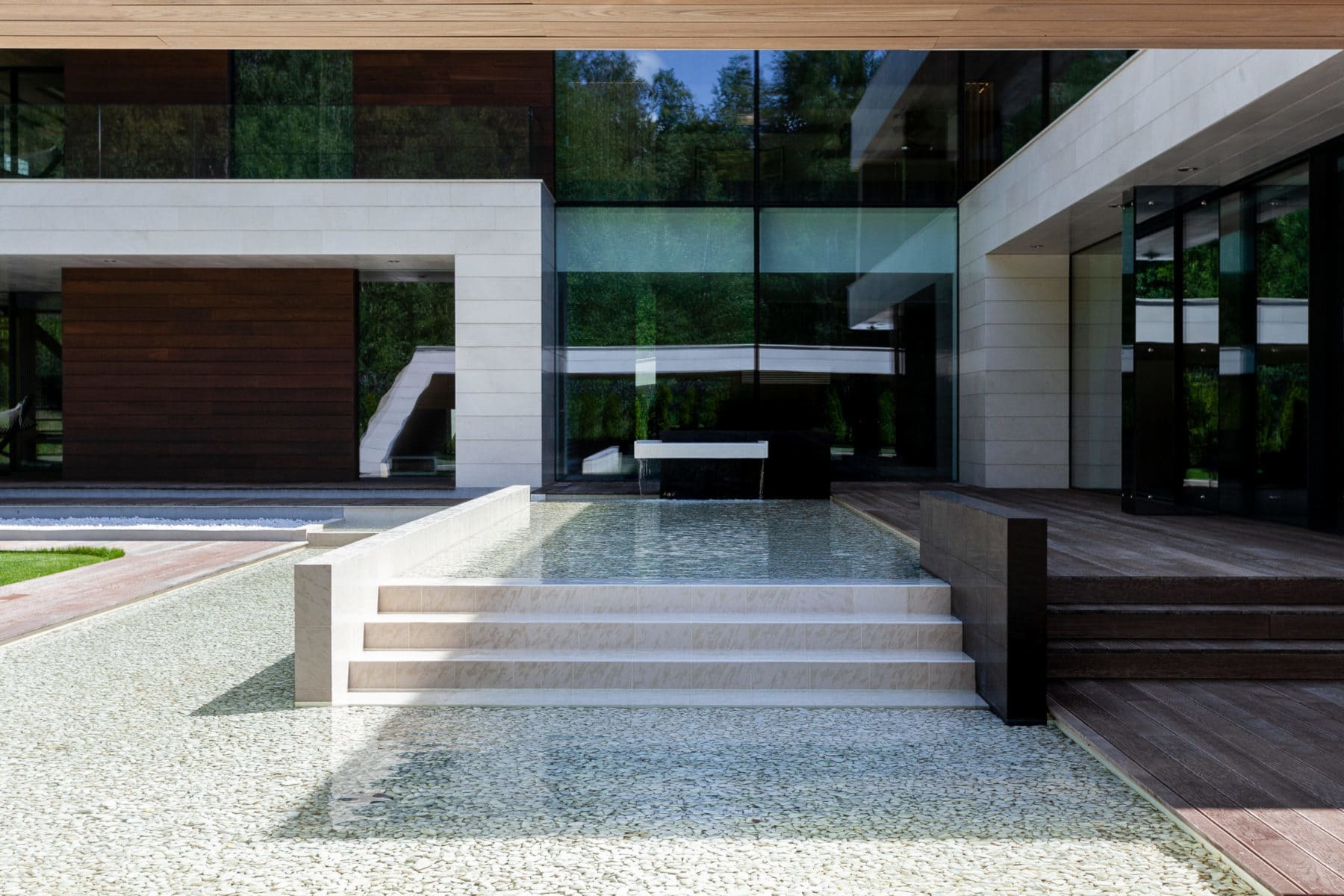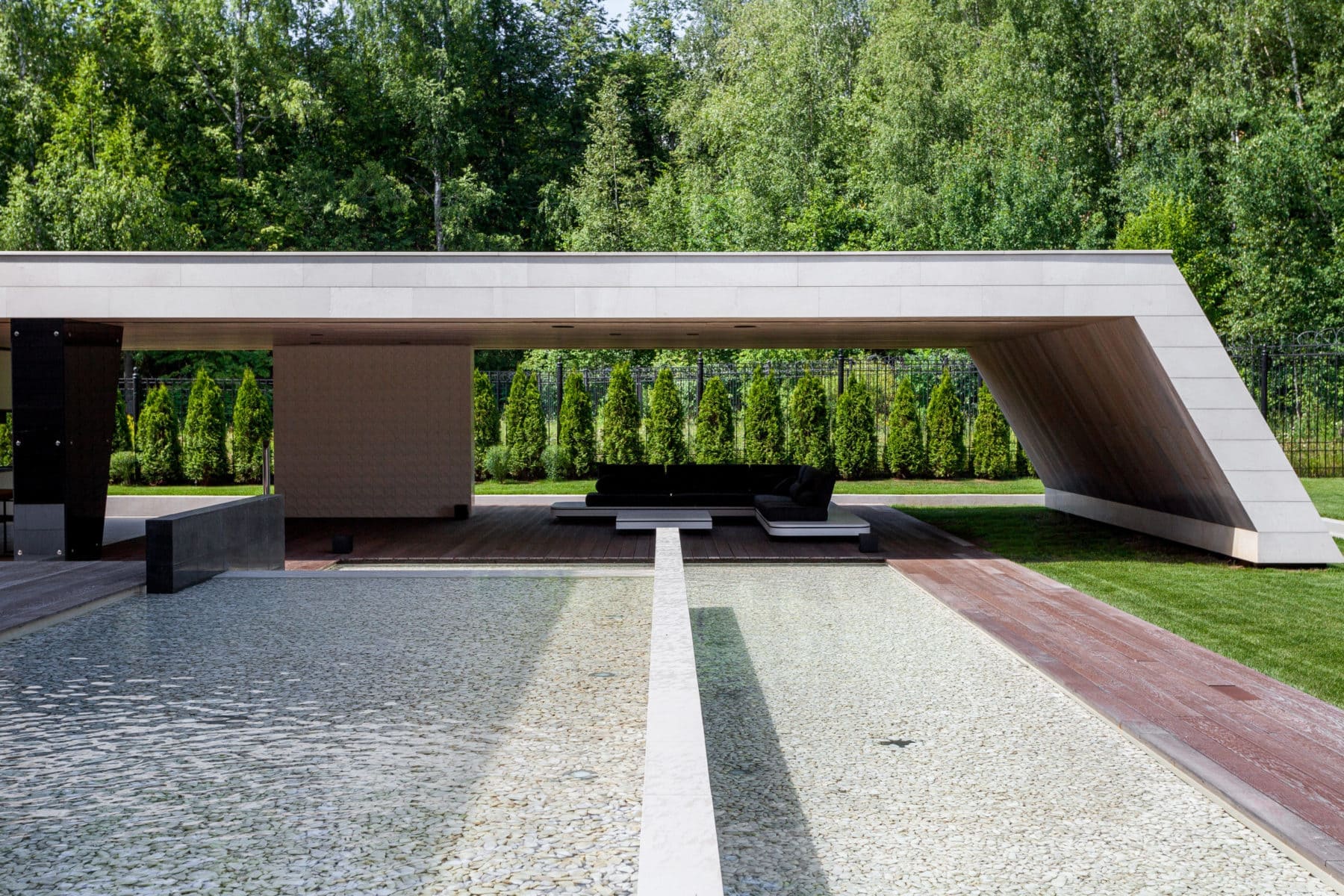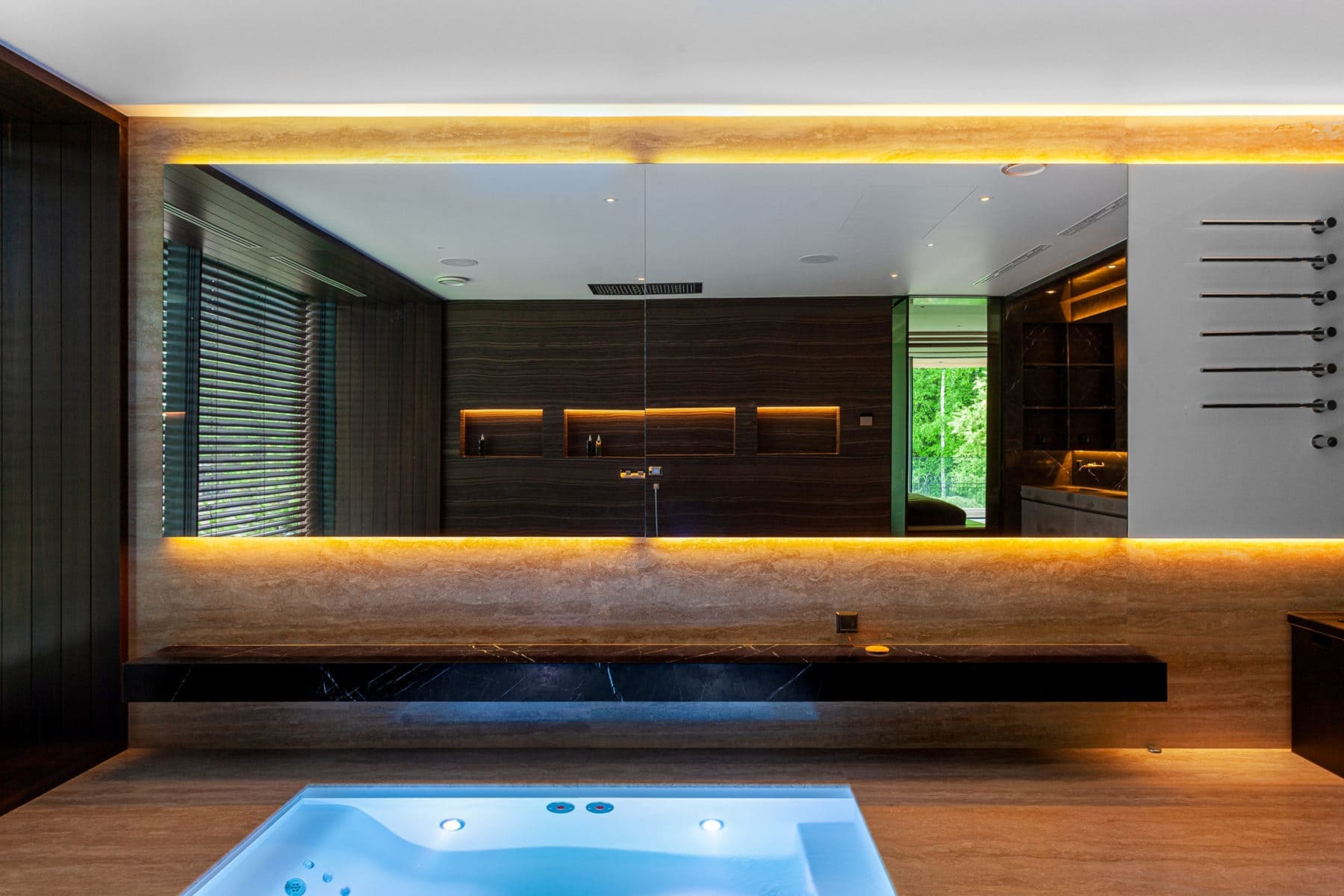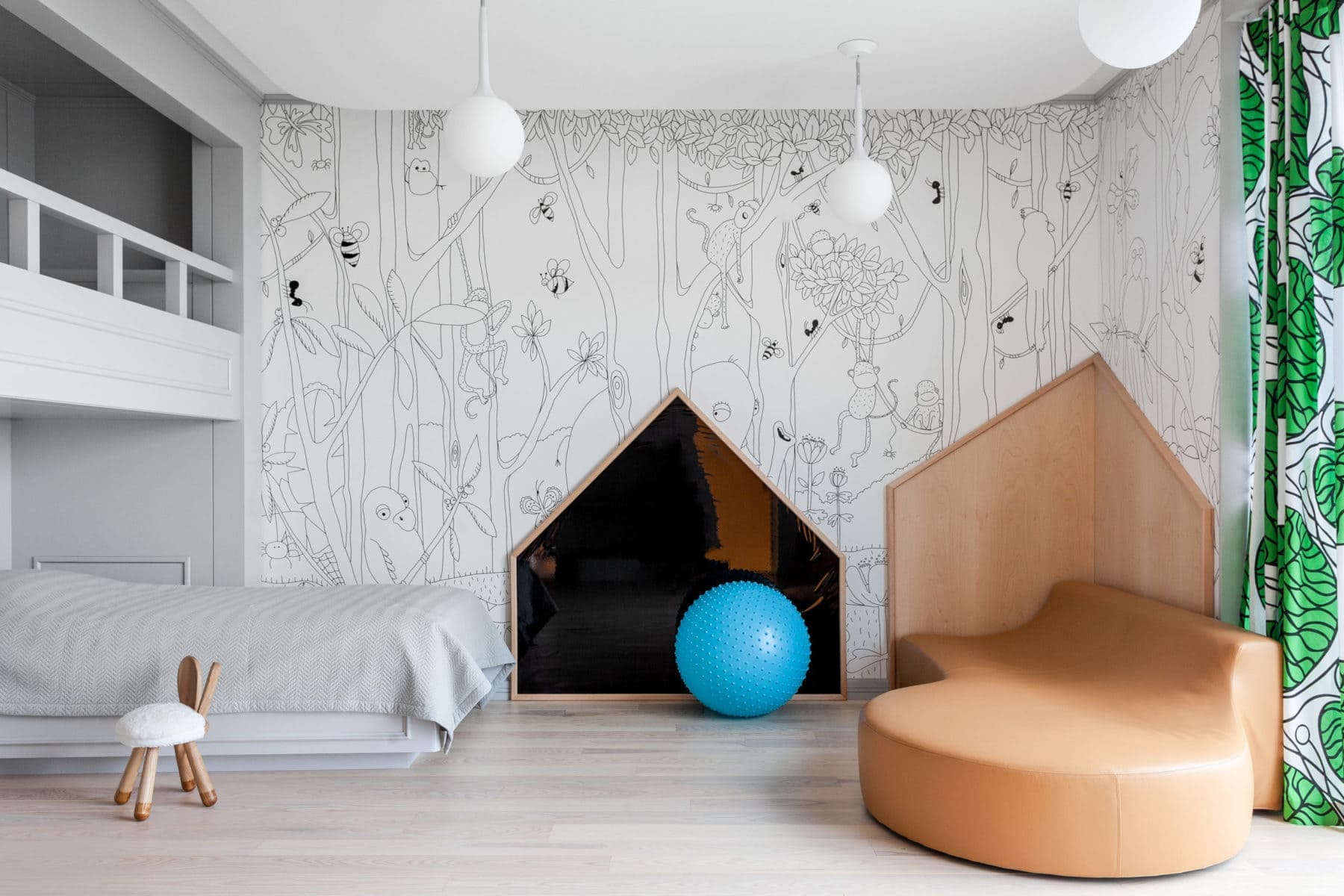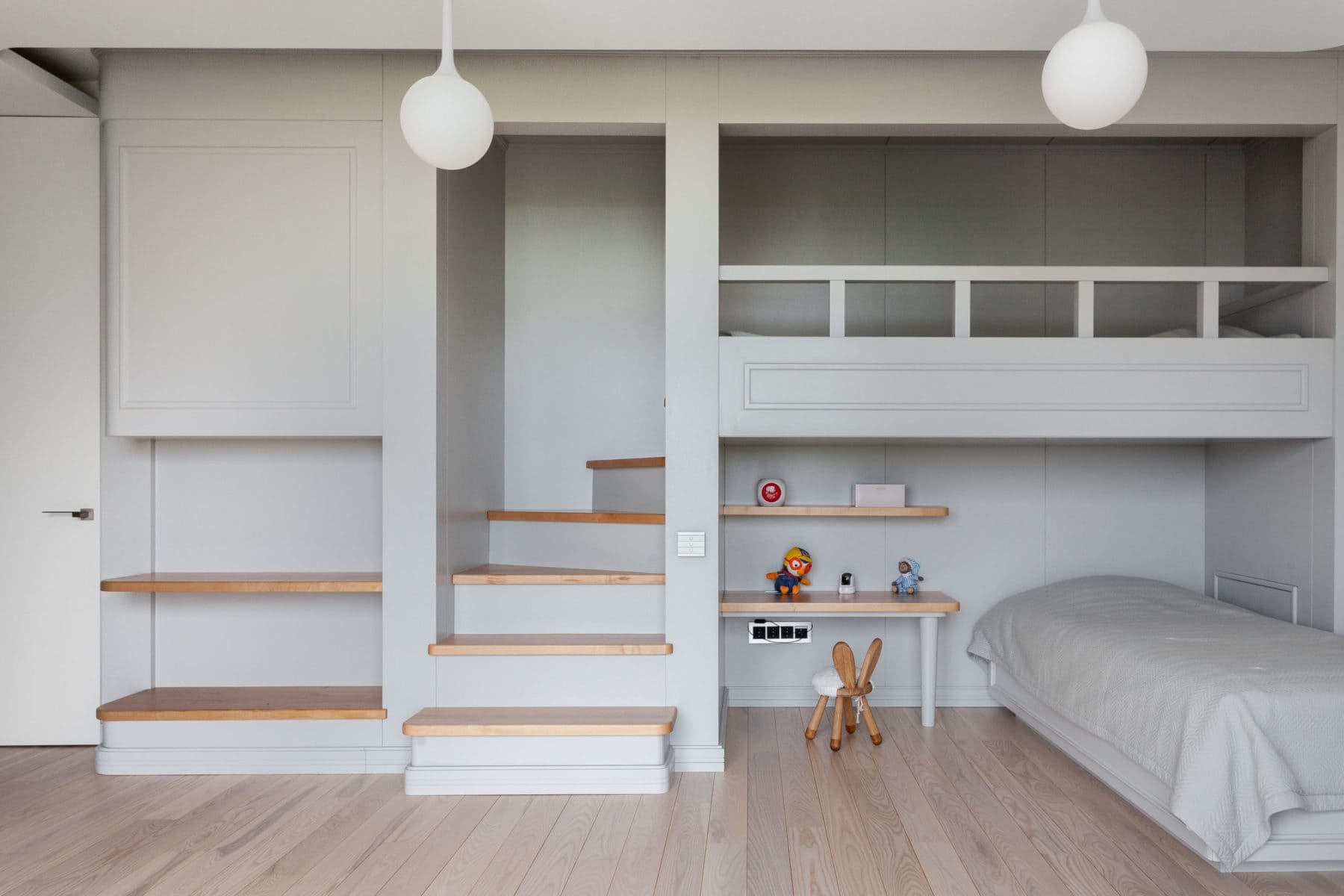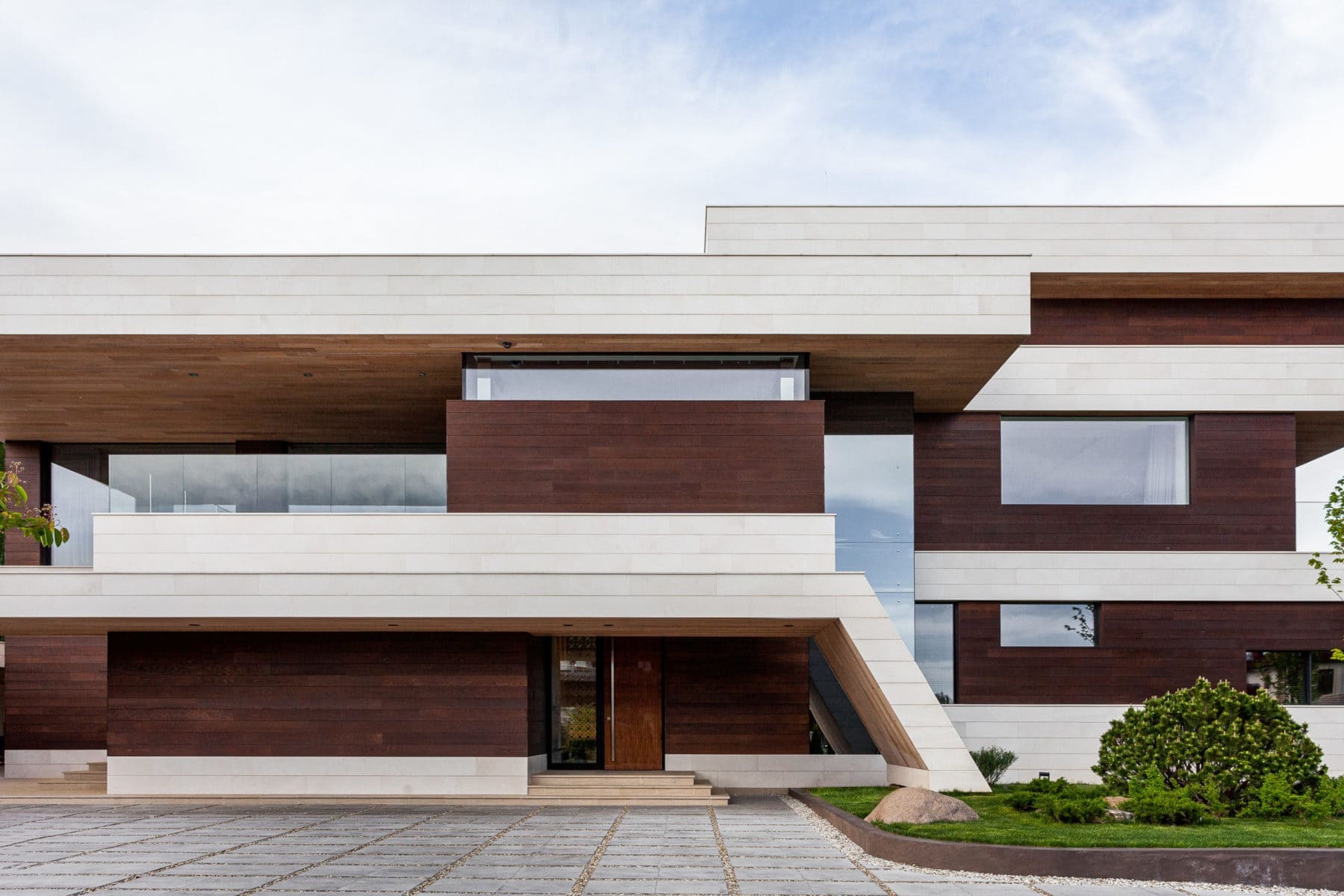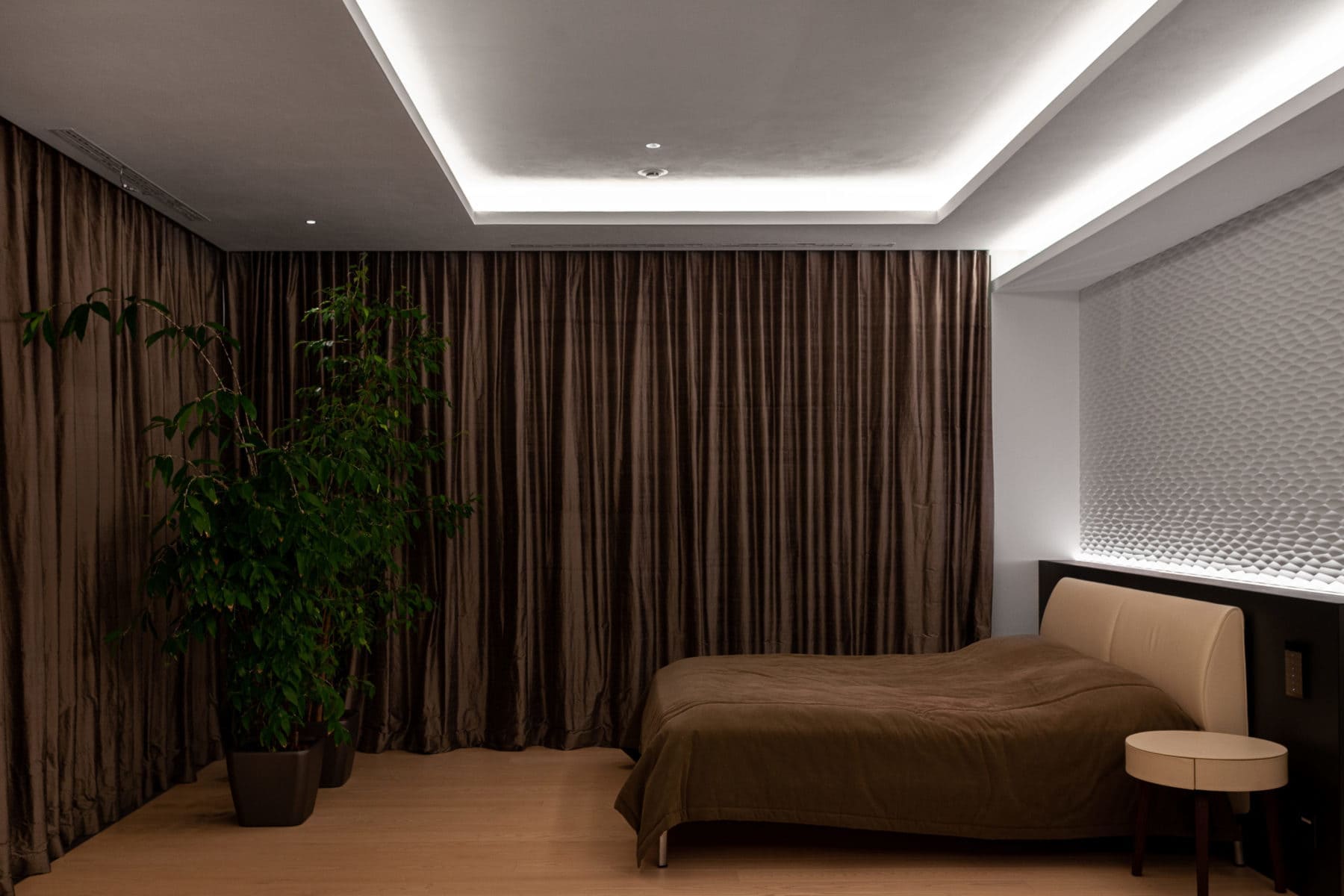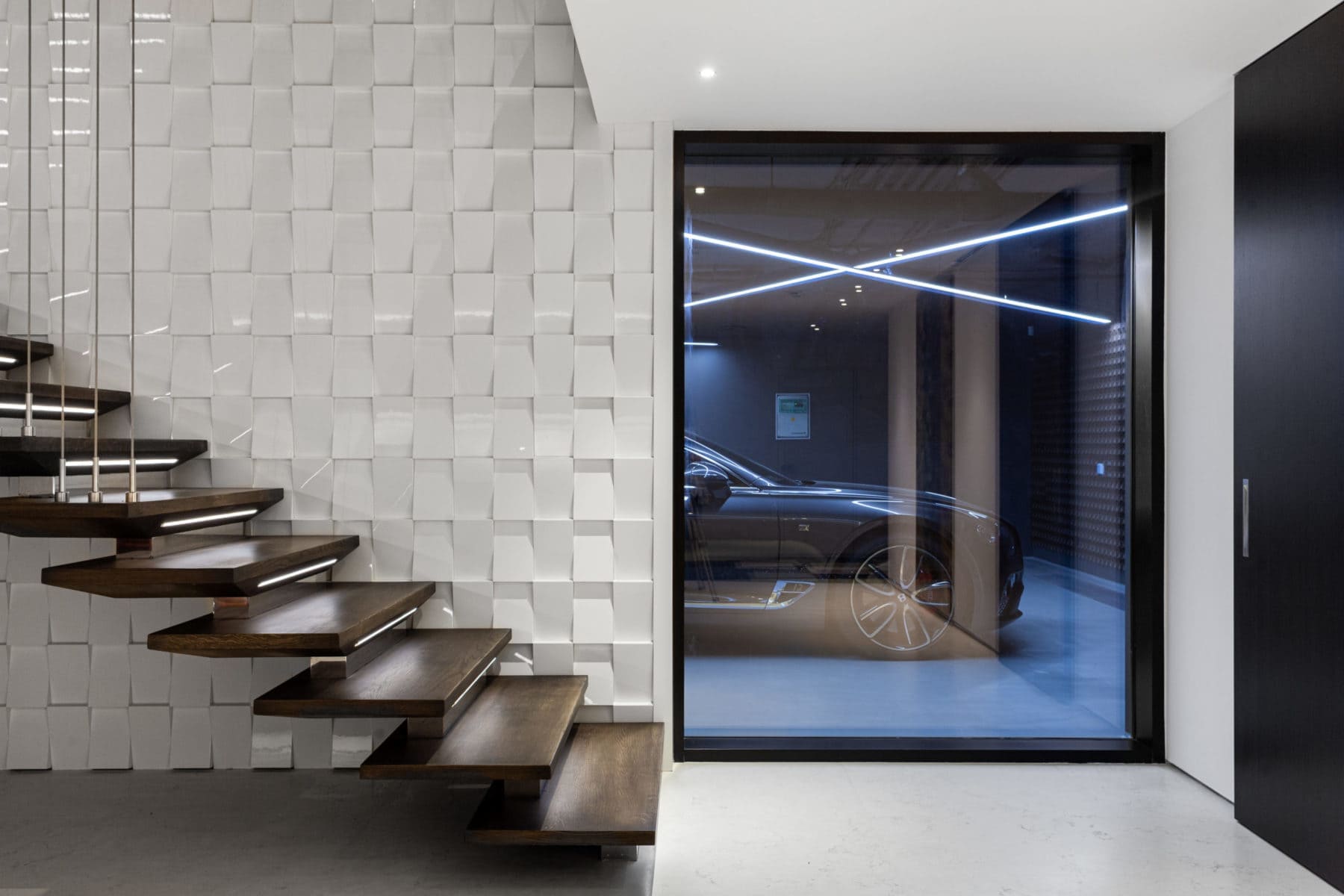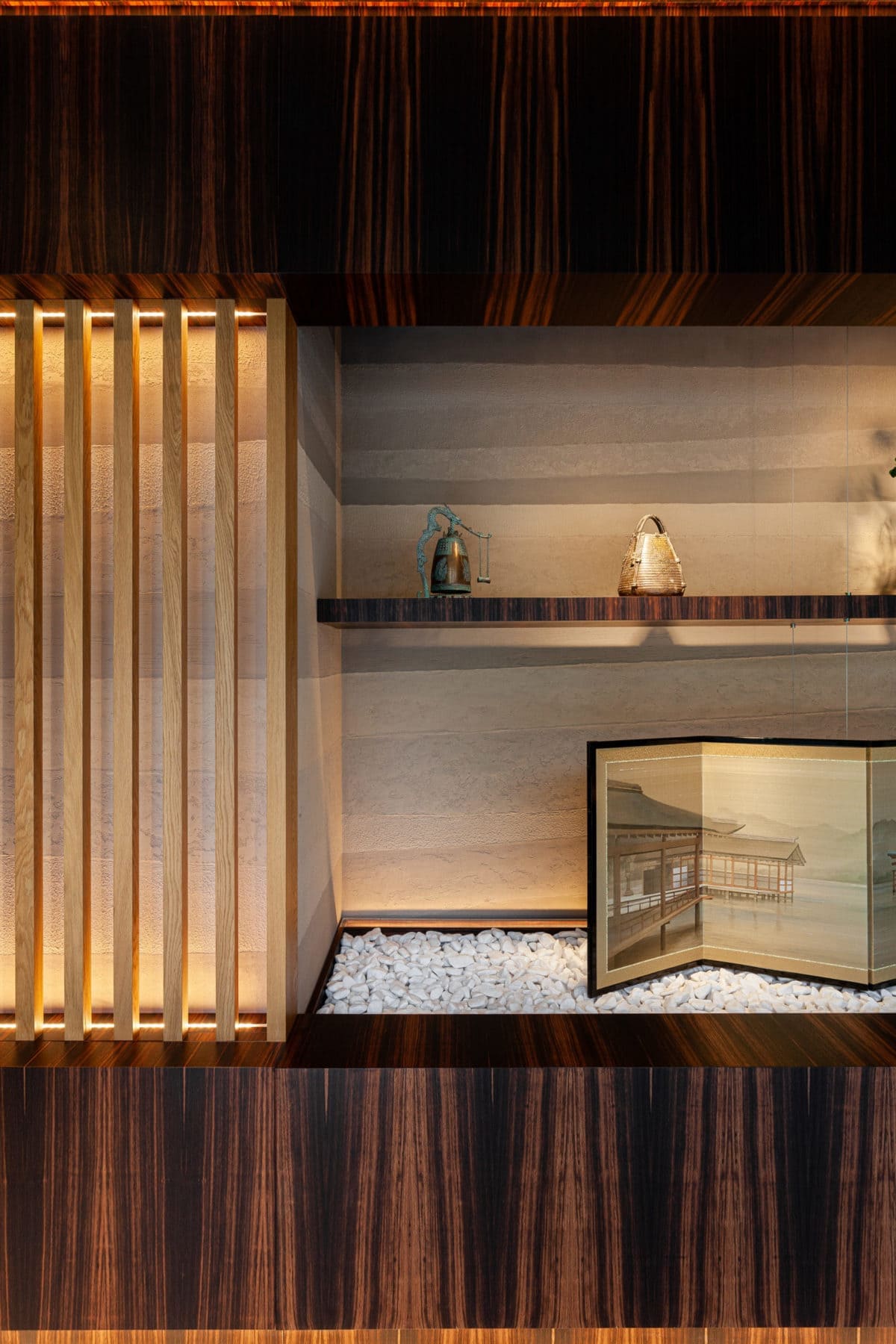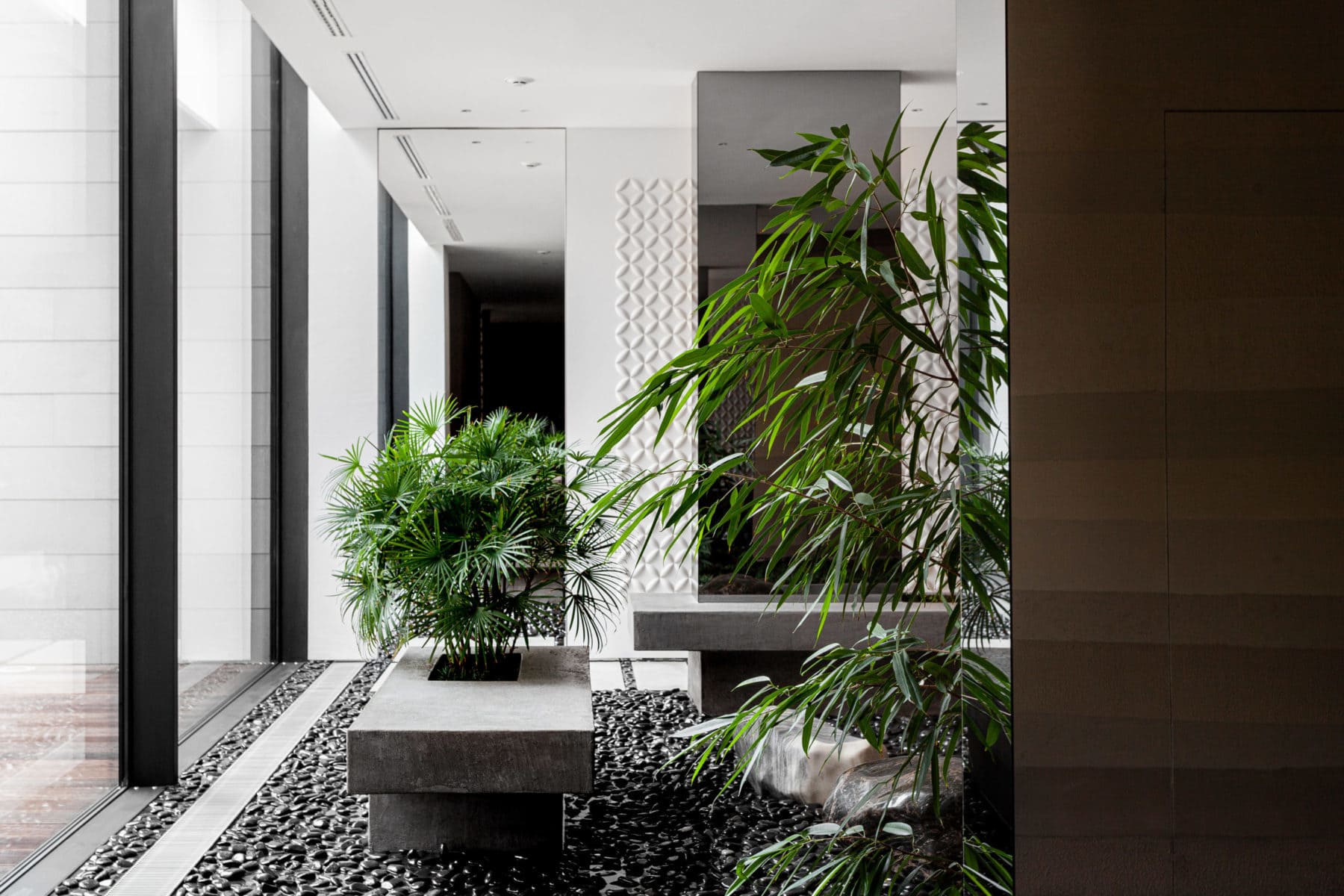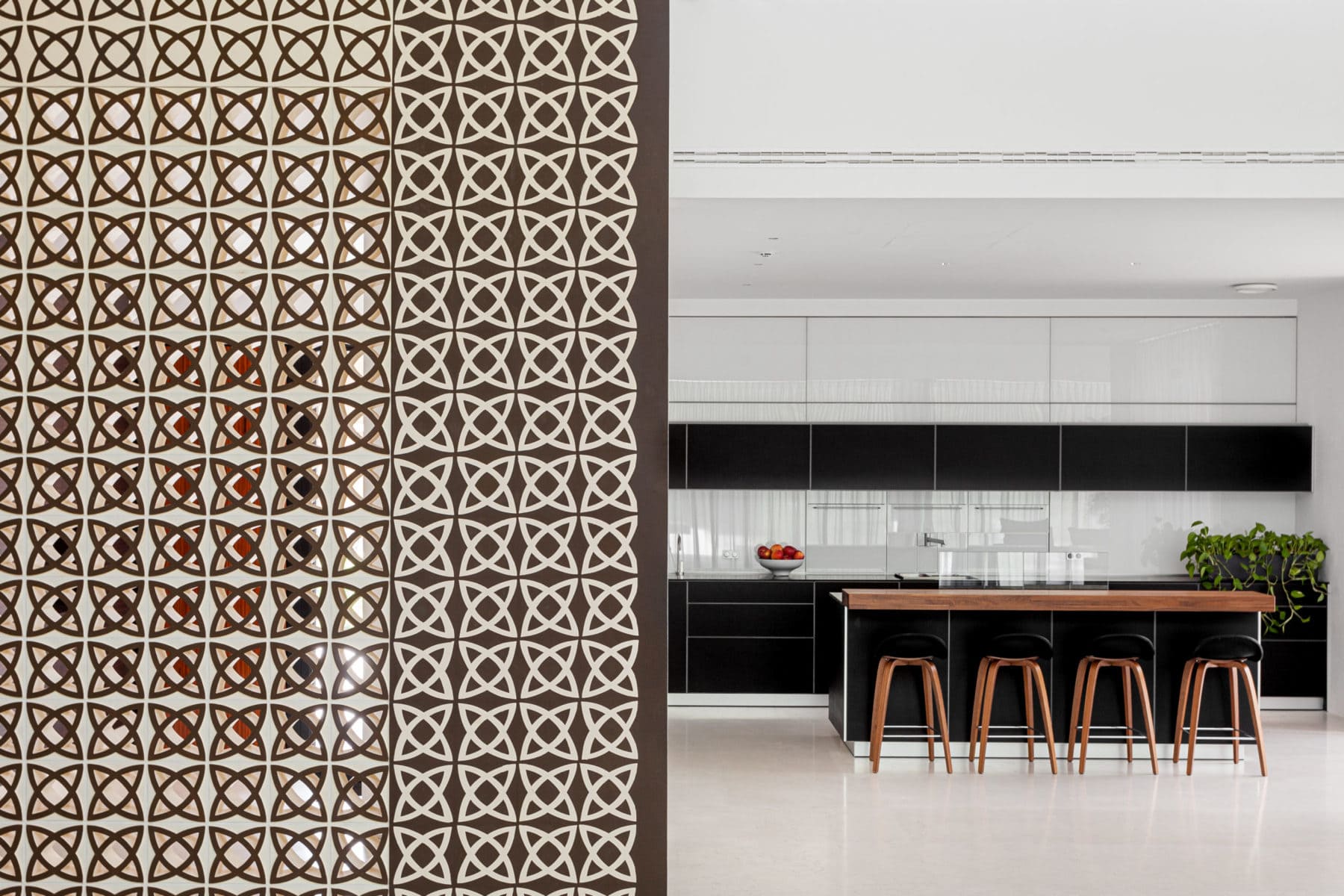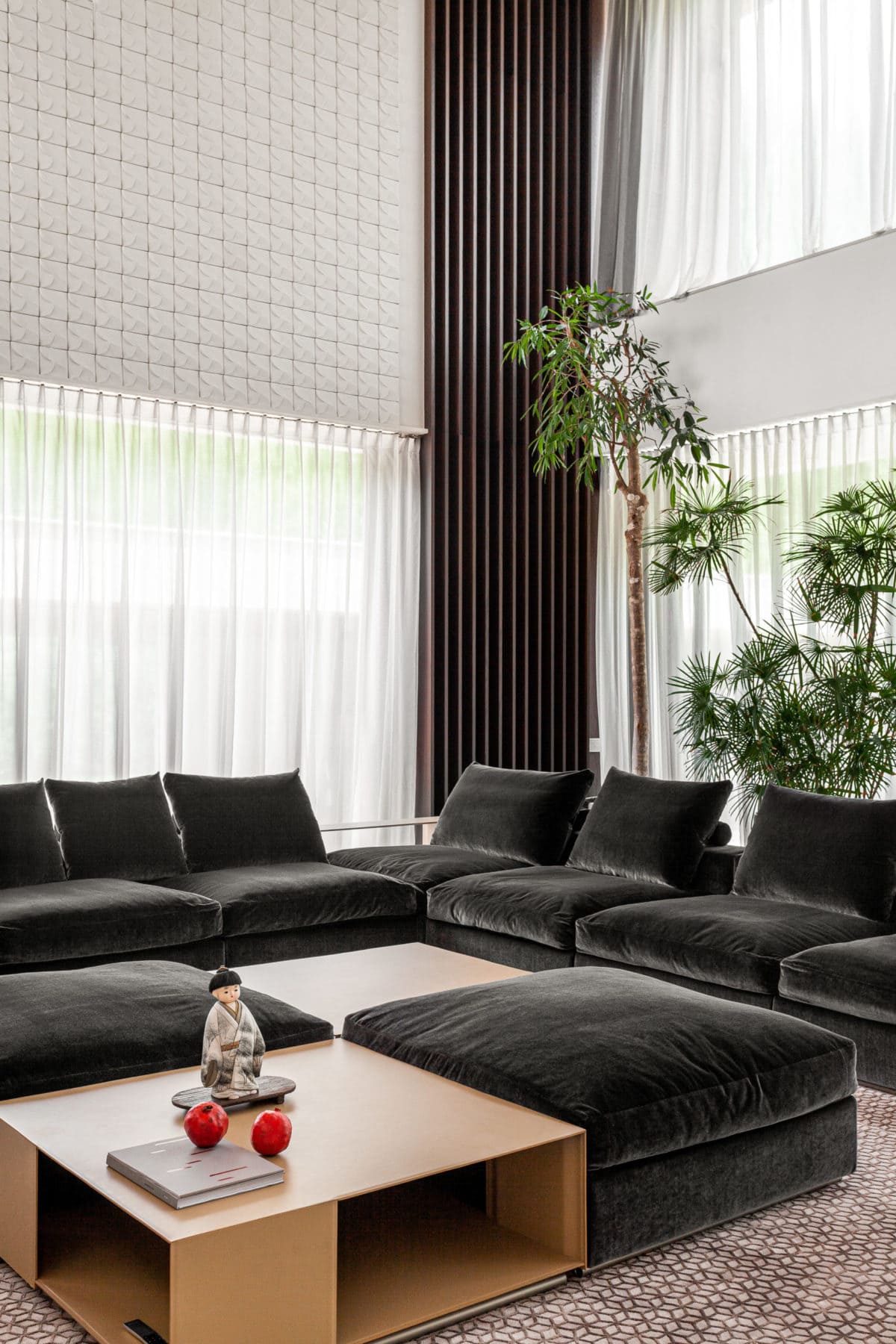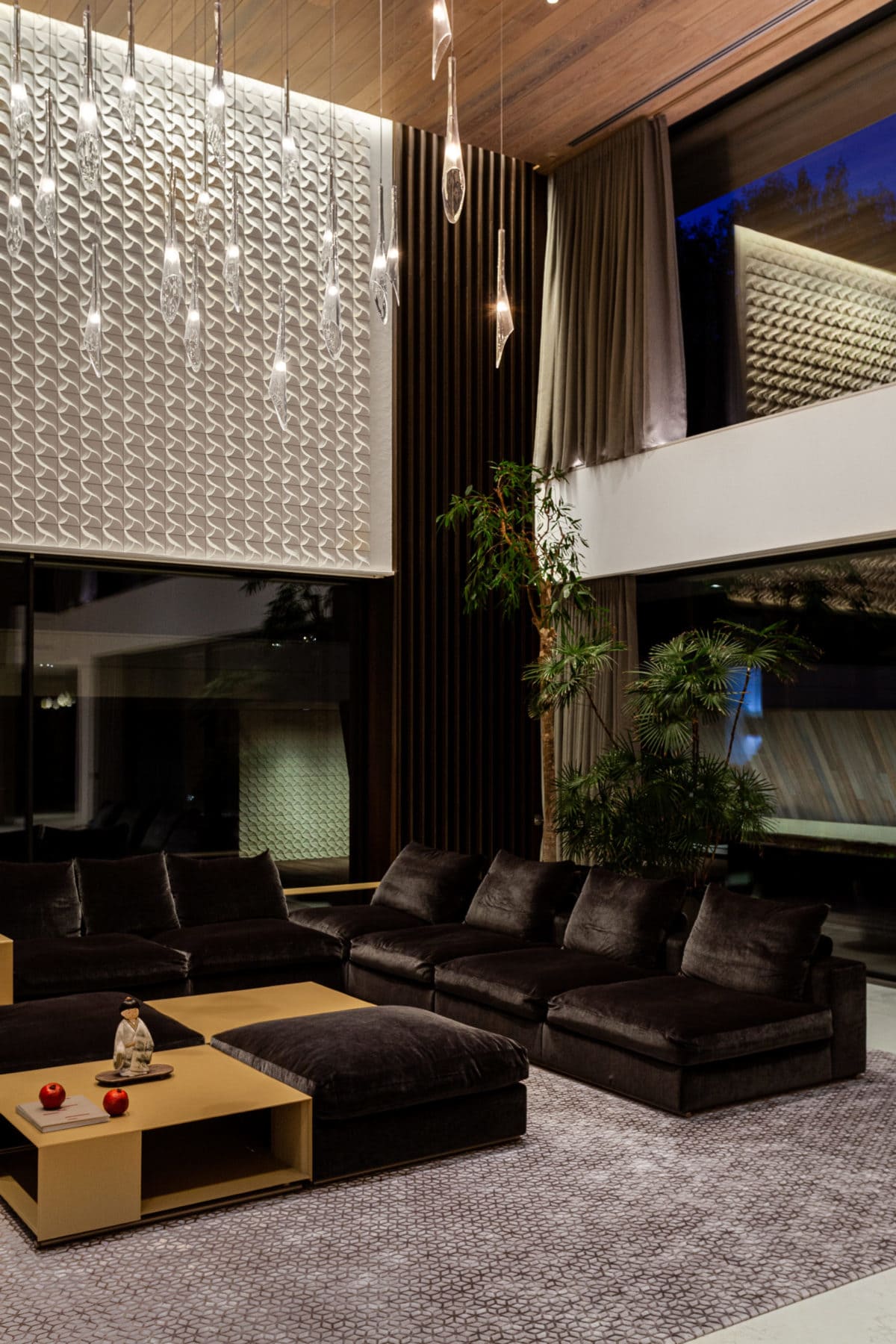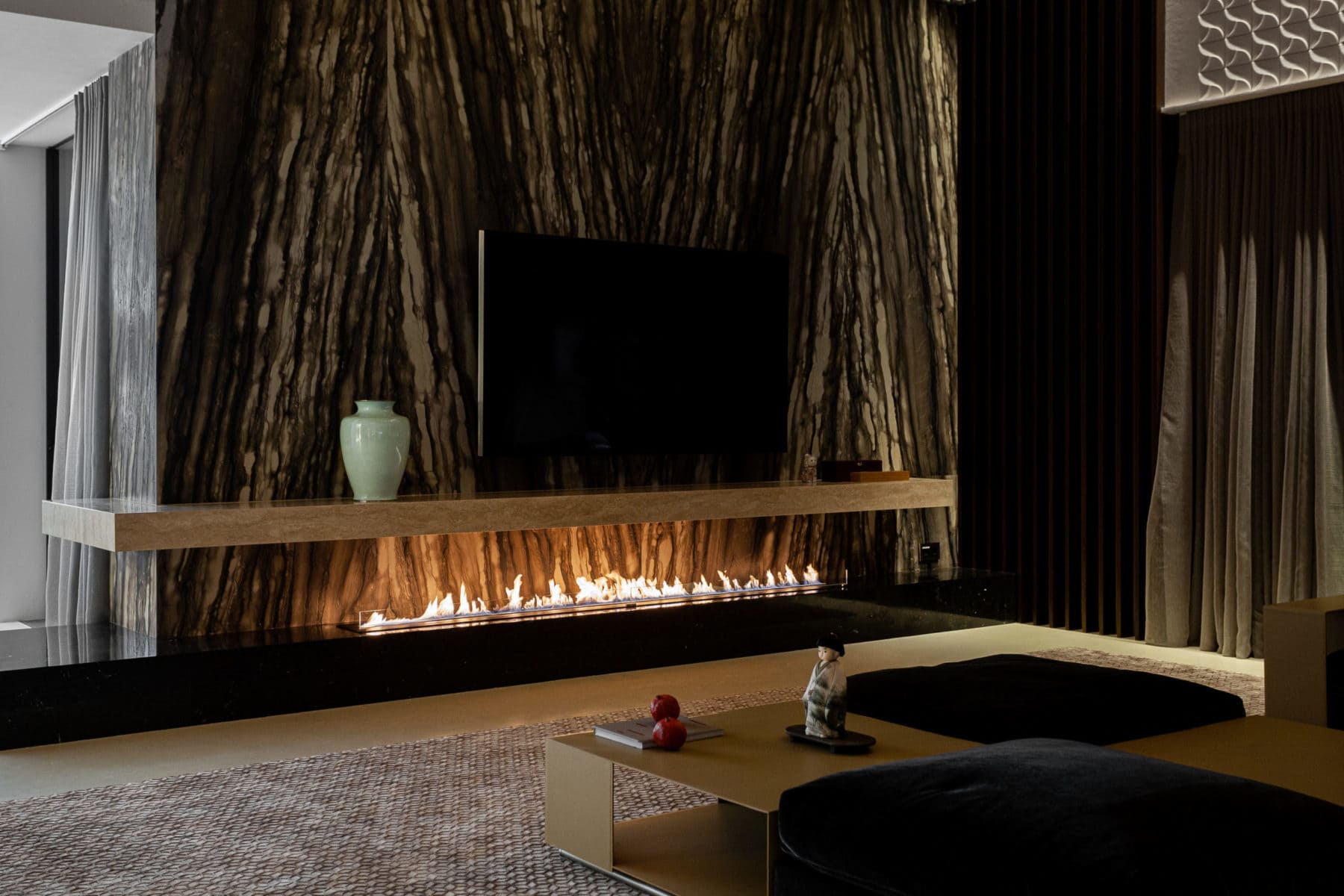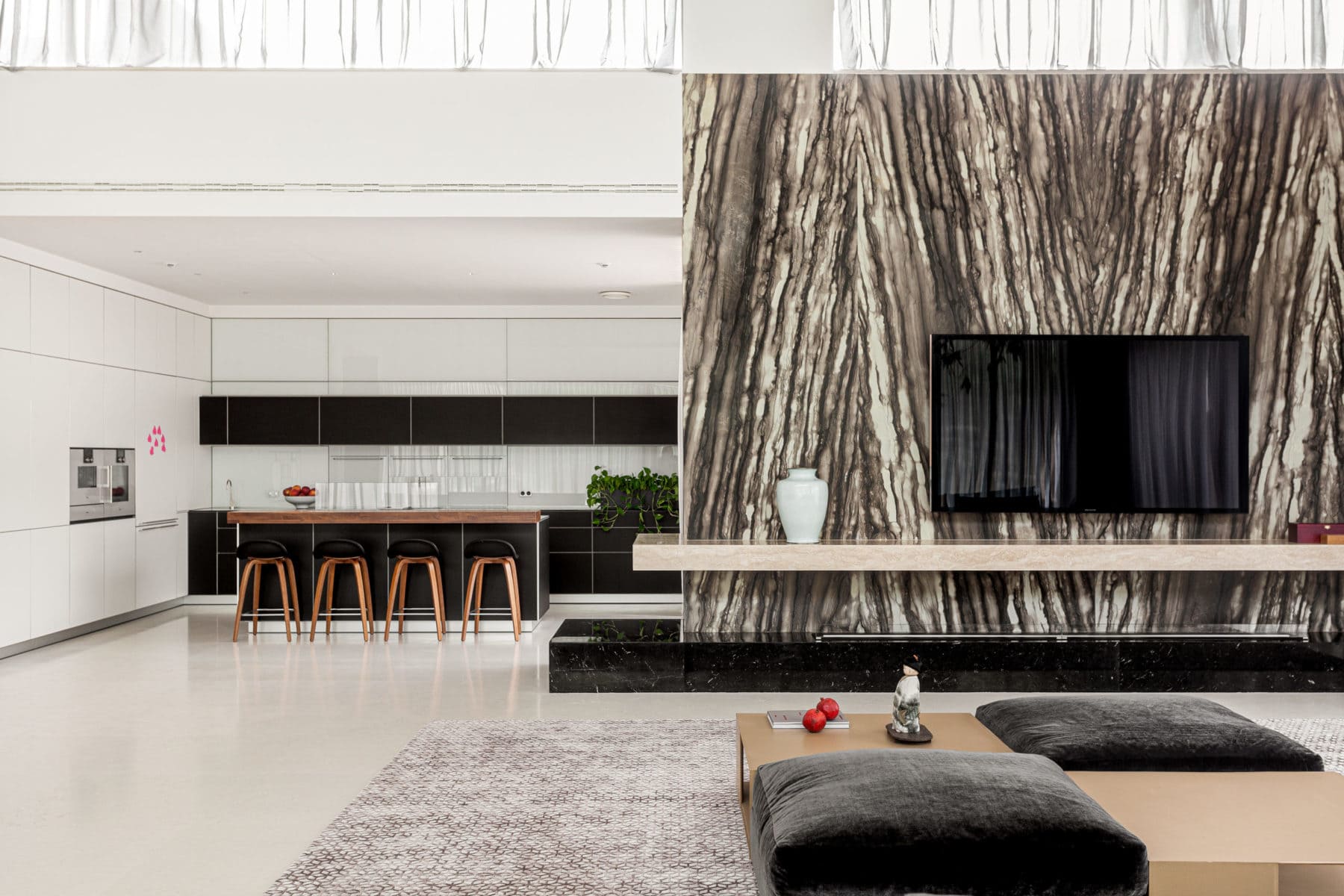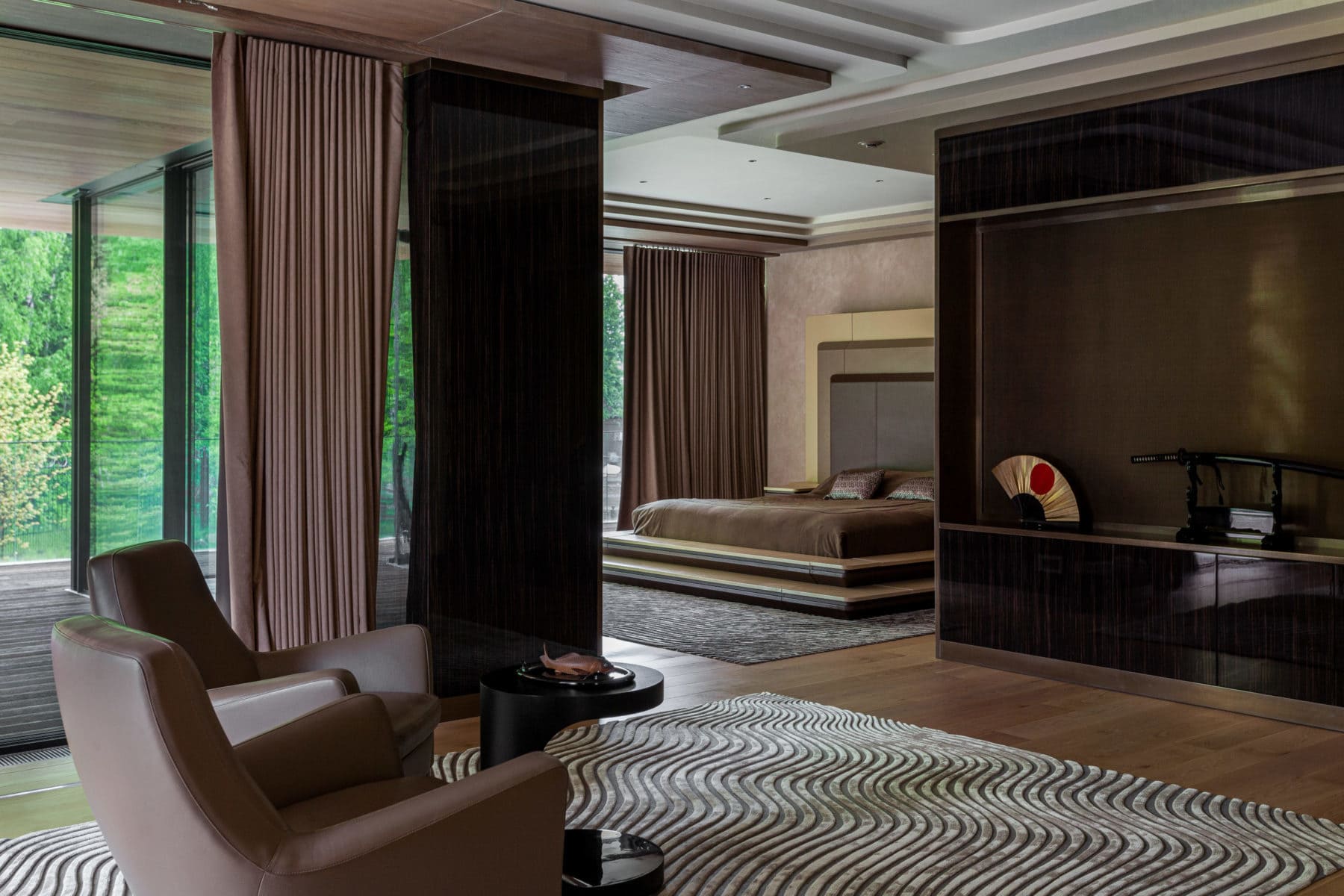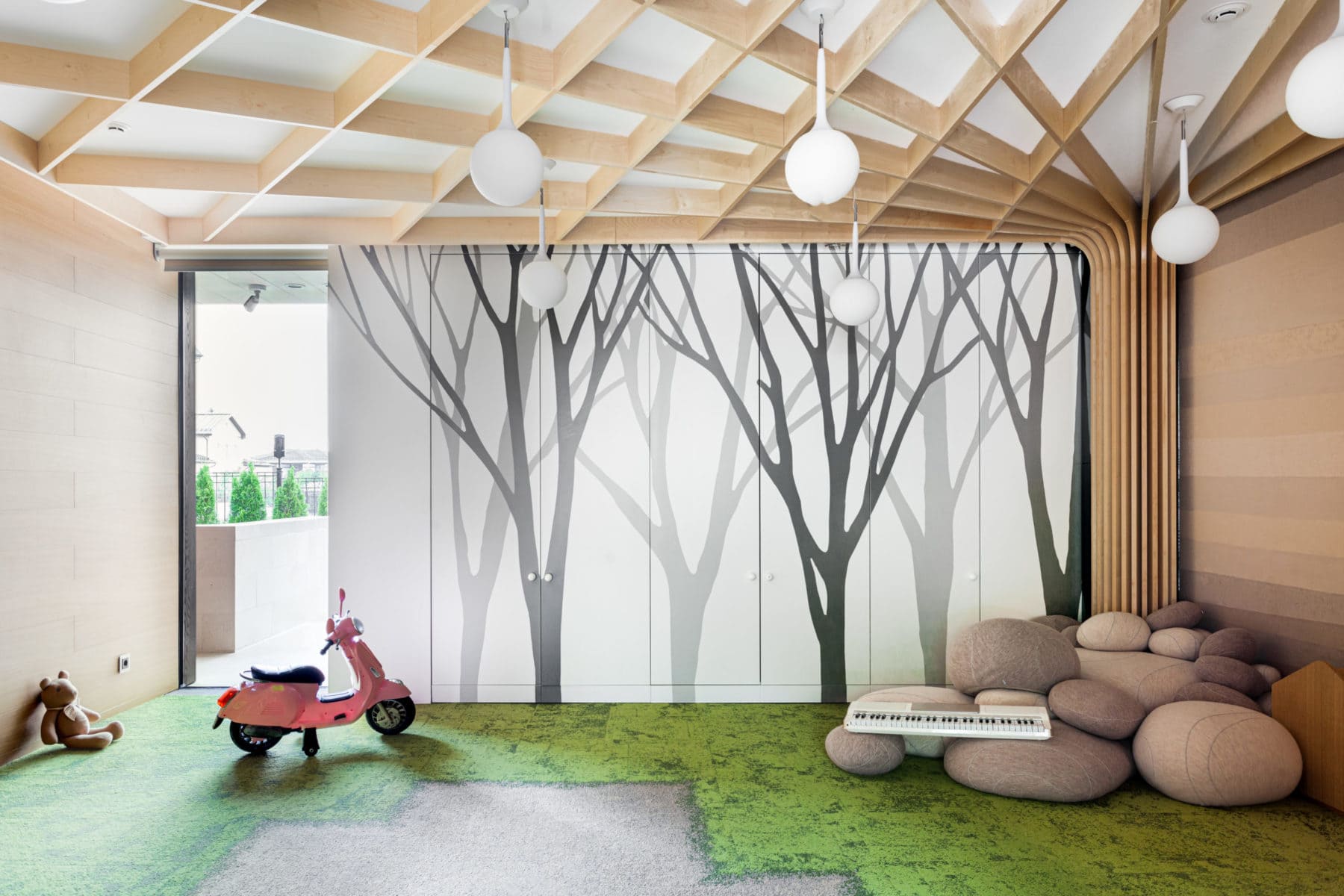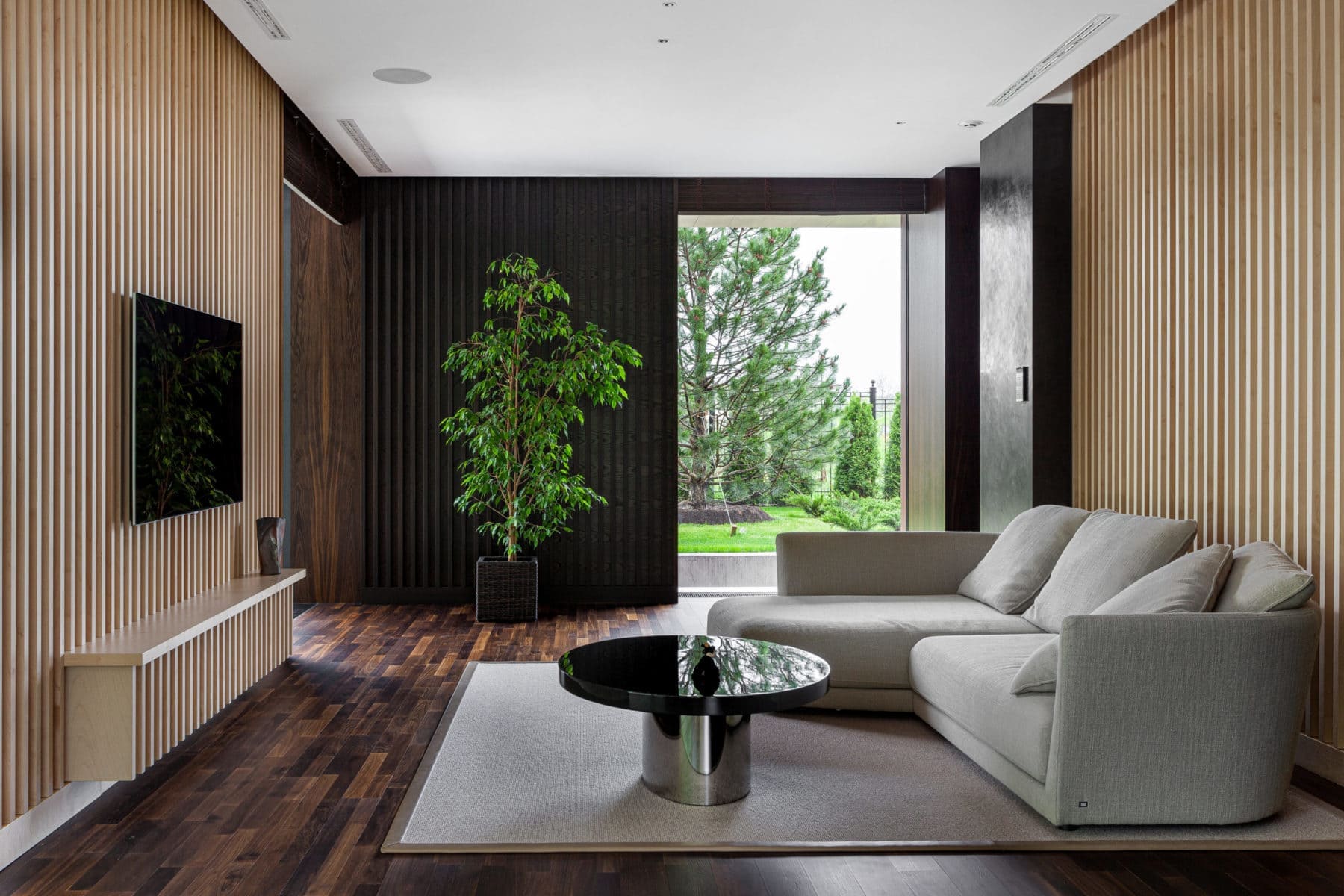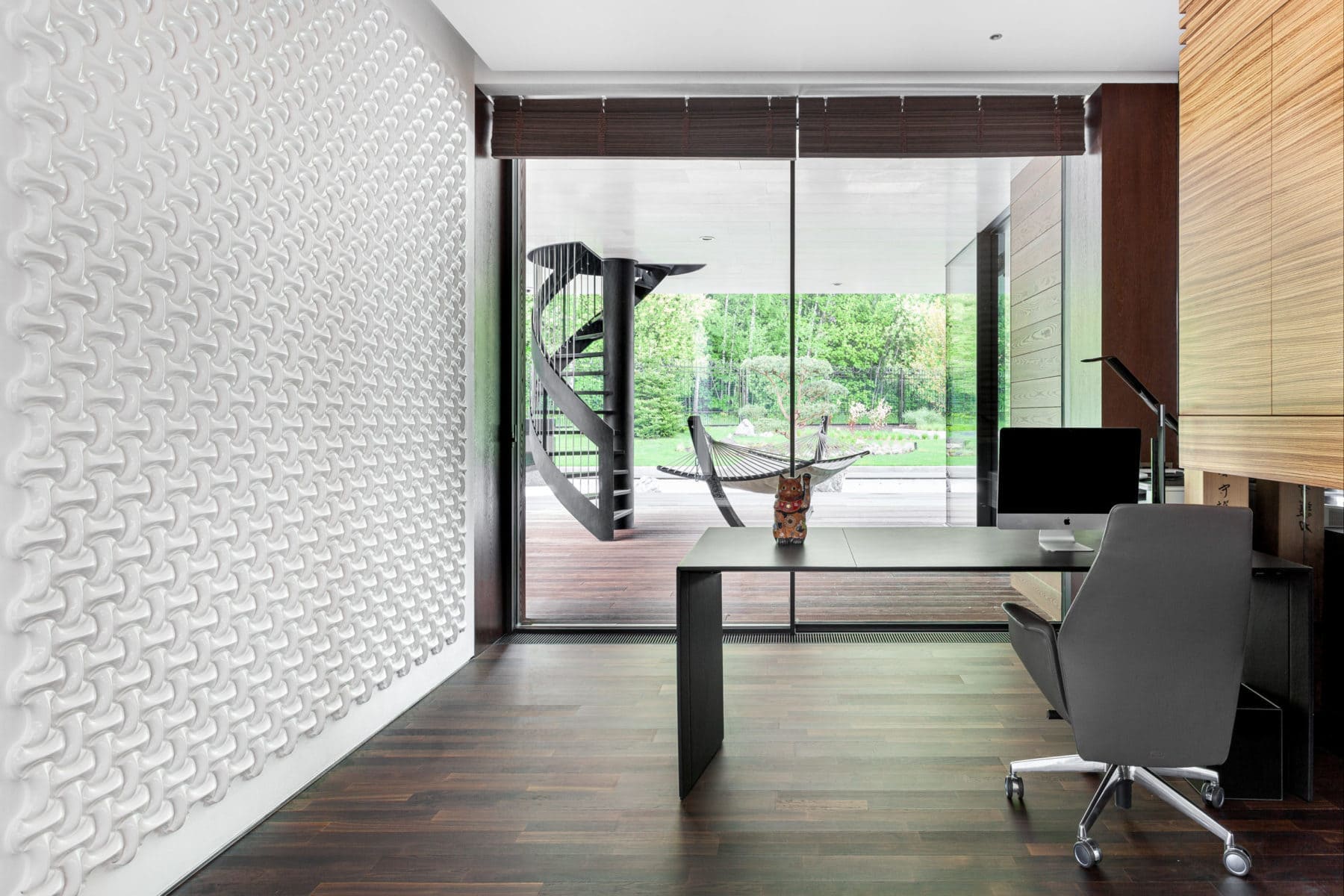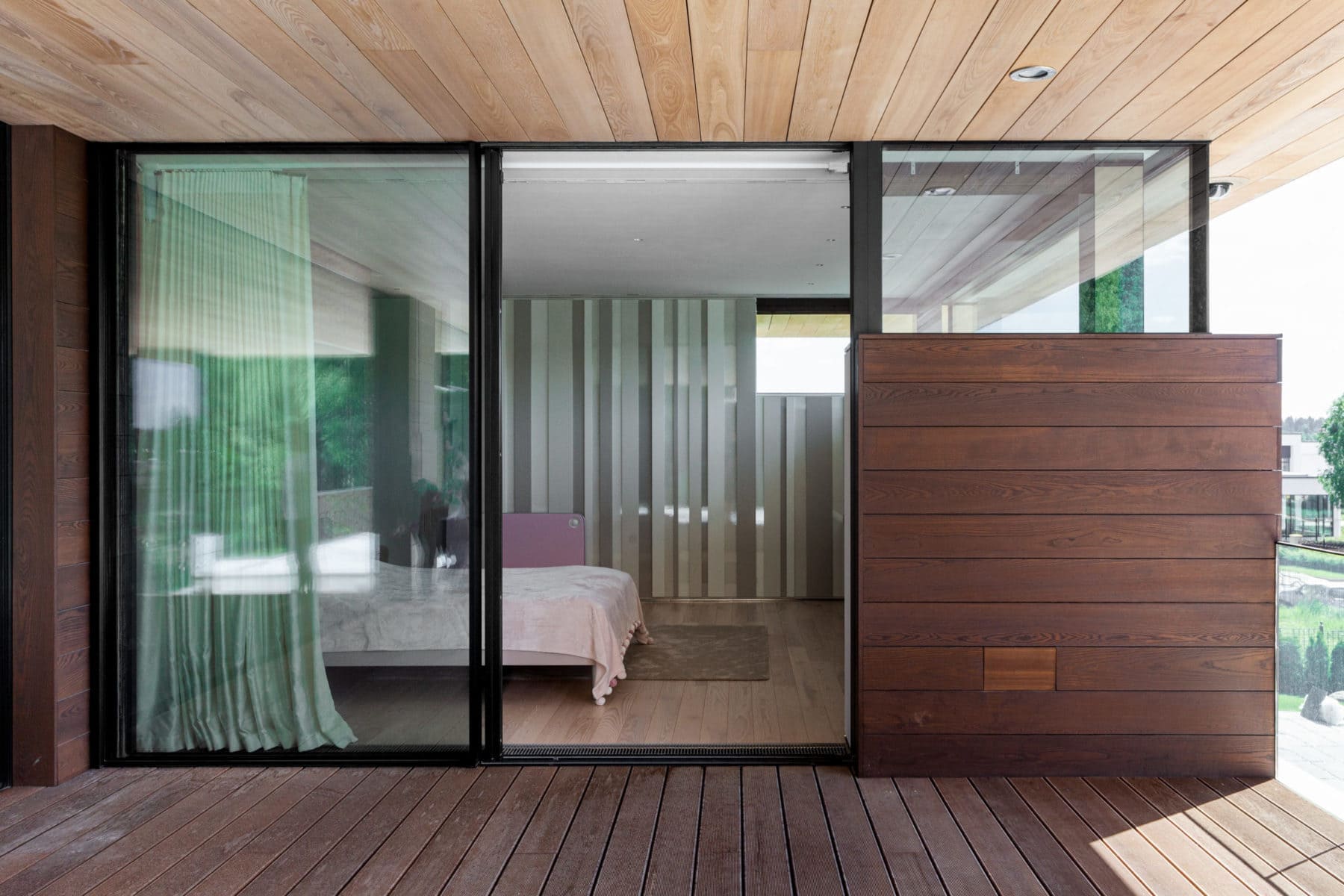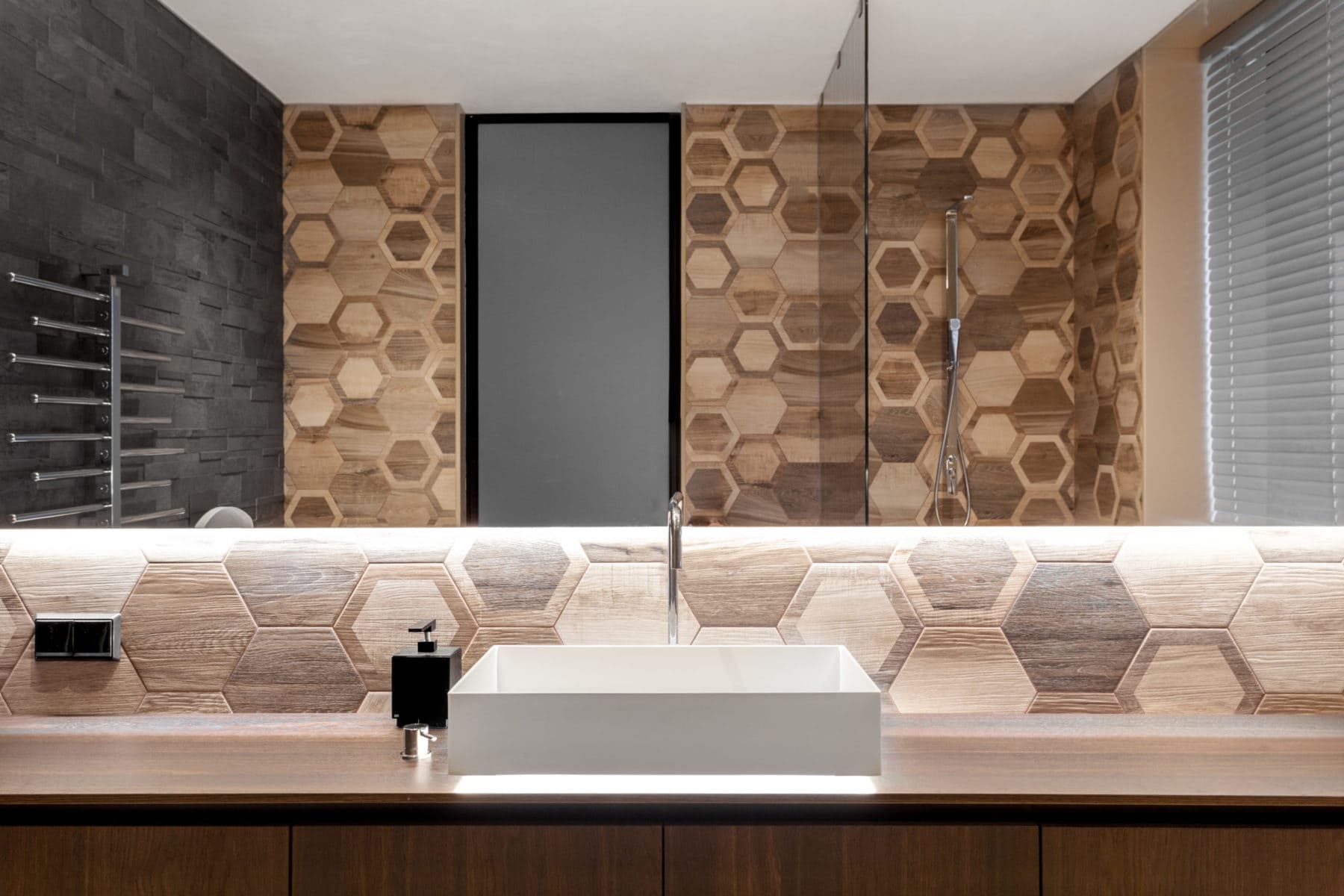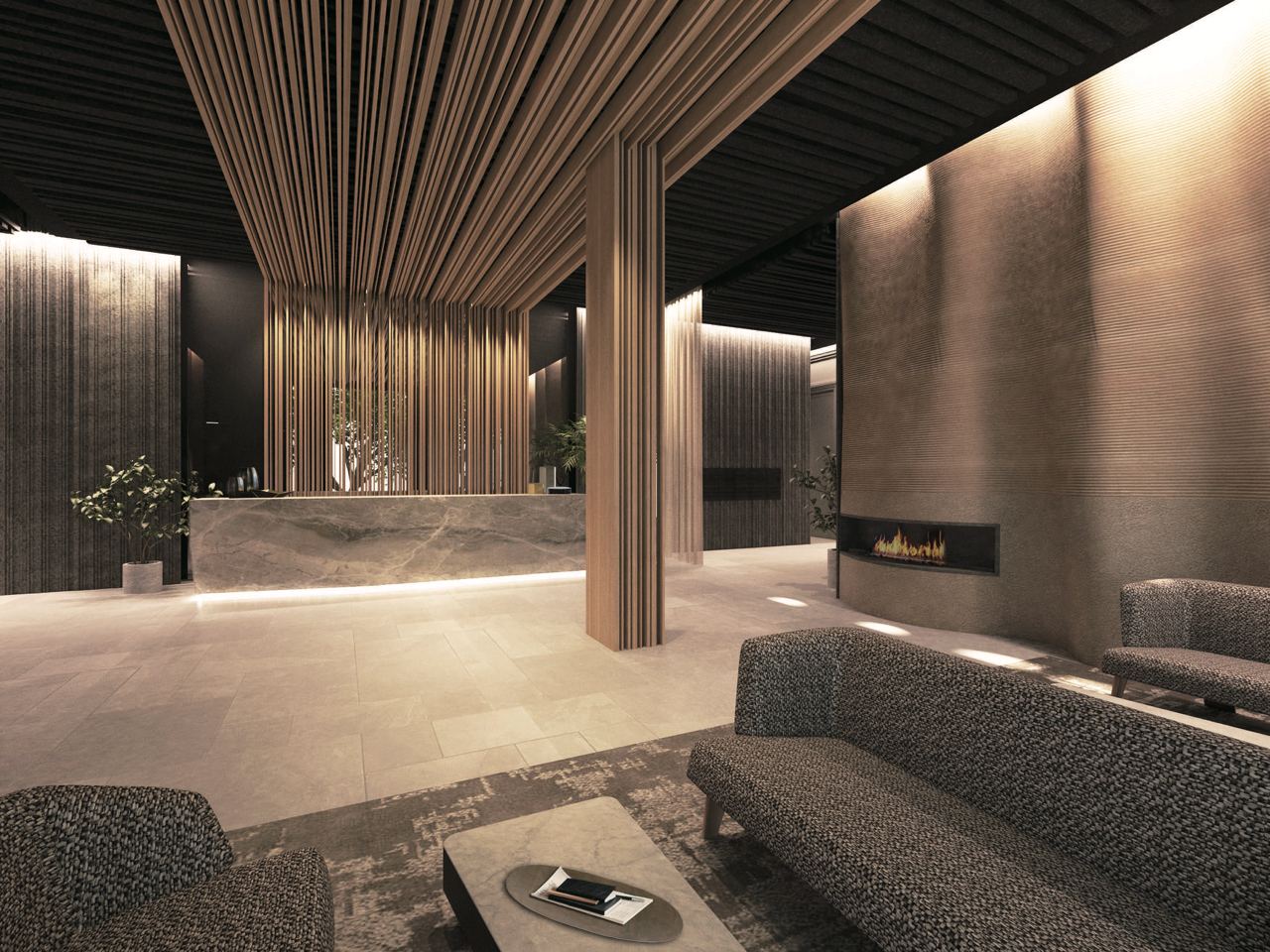Modern Minimalist House: Novaya Riga Project
By the time we met, the client was already interested in Japanese culture and had a good understanding of Japanese poetry and cinema. Even though he had not been to Japan yet, he agreed to bring a Japanese architect in to work on the project and create a minimalist house.
This project, that turned out to be unconventional in many aspects, had started before we joined it. The client had a design solution for his property made by a Russian architect but was not happy with the layout and functionality. When our Japanese expert presented his vision, it became apparent that in the previous project the house looked heavy and a lot of the space was left unused.
We had to tackle two complex and extremely interesting challenges in this project. First, we had to redesign the existing project for the house and alter all its functionality. Secondly, we had to integrate Japanese architectural vision and modern house-building trends with essential elements of Islamic culture, as requested by the client.
We engaged two subject matter experts for this project: one on the Islam tradition and architecture, and one on Japanese culture. The main task was to pinpoint the values that are important to both cultures. We had to create a space comfortable to live in and reflecting the client’s affinity for Japan, yet not conflicting with his culture and religion.
We managed to bring the project together through the idea of water and garden, both of these elements play a major role in Islam and Japanese culture. The rock garden and the tiered swimming pool in the courtyard of the residence symbolising the Garden of Eden, represent the concept of eternity through everflowing water and inevitability of time.
Over the course of the project, we travelled to Japan with our client several times, introduced him to the culture and our Japanese partners. He fell in love with the country now and for all and gave a piece of his heart to Japan, by bringing some of its culture to his home.
The house was built in 2018. Our company did a complete redevelopment cycle, changed the ideological, architectural and engineering components of the project.
According to the client, our design was ahead of its time. Later, as he travelled around the world and stayed at the trendiest hotels, he saw that some of the innovative ideas and technological solutions he was coming across had been already implemented in his home by our Japanese architect a few years prior.
This project showcases our expertise in adaptation of different cultural ideas and concepts within an architectural object.
We’ll be happy to design a minimalist home for you and engage best Japanese architects for the job.
Minimalism as a movement first emerged in fine art. The term “minimalism” came from Richard Wollheim, a British art theorist who argued that the major characteristic of young artists’ artwork was that their work had “minimal art content”.
Minimalist style in architecture owes its origin to Ludwig Mies van der Rohe who was one of its crusaders along with other Bauhaus authors. The style emerged in 1950-60s and remains relevant as of today. At some point, it underwent a strong influence of Japanese traditional design and architecture, which is why there are many Japanese designers working in this aesthetics. Zen philosophy, Ma (間) concept (the space in between literally meaning gap, space, or pause) and wabi-sabi have shaped Japanese interior in minimalist manner for centuries: very simple, free of excessive decorations, full of air and light. For the Japanese an empty space often holds as much importance as the rest of an artwork, emptiness is often seen as full of possibilities, open to new ideas and creativity.
Simplicity and functionality are the fundamental principles of minimalism in architecture, which does not mean that architecture and interior need be entirely devoid of decorations, but the whole structure of a building and its details have to be polished down to the point where nothing else can be removed. It is not the intricate and sophisticated ornaments that make the building, but the shape, location, materials, and light. Architects working in minimalist aesthetics often try to build connections between their house and the surrounding landscape or other buildings.
Minimalist architecture has its admirers and critics. The strong individuality of the style makes it possible to be used for private property projects. Actually, most of the recognised minimalistic masterpieces are represented by private houses, such as the radically minimalistic Wall-less House by Shigeru Ban, Okinawa House by John Pawson or the Farnsworth House by Ludwig Mies van der Rohe, the forefather of minimalism. Minimalism is often chosen for private residences in the country, as its emphasis on natural materials and integration of the outside (nature) into the inside (interior) perfectly harmonise the building with the surrounding landscape.
Nowadays, people are overloaded with excess of things, information and other people, and minimalism is the best way to cleanse the palate. It is a great choice for a private house. There is a saying “The wealthier people are, the fewer things they have”. It is a great illustration of trends we see among successful businessmen, artists and politicians. Minimalism offers simple and efficient home layouts, clean lines, pristine shapes, and spaces full of light and air. Minimalist architecture helps you reduce the stress and alleviate sensory overload from information and visual noise; minimalist interior helps you pause and relax, eliminate all the unnecessary and return to original purity. We believe that the concept of minimalism is higly relevant to today’s life, so we expect to see more and more minimalist buildings and designs.



